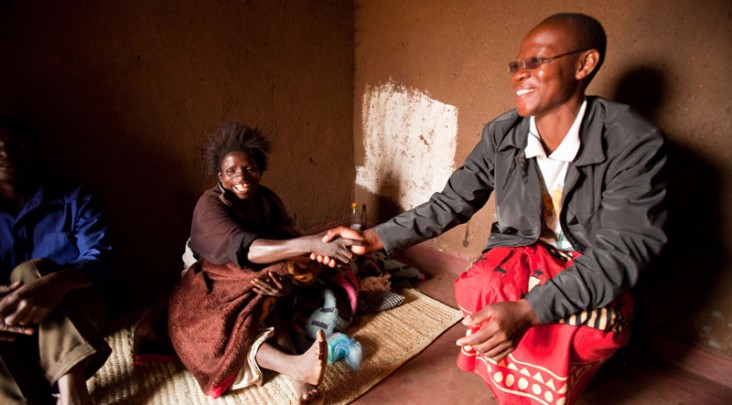- What We Do
- Agriculture and Food Security
- Democracy, Human Rights and Governance
- Economic Growth and Trade
- Education
- Ending Extreme Poverty
- Environment and Global Climate Change
- Gender Equality and Women's Empowerment
- Global Health
- Water and Sanitation
- Working in Crises and Conflict
- U.S. Global Development Lab

Social and behavior change (SBC) programming has long been an area of strategic priority to achieve the U.S. Agency for International Development’s (USAID’s) goal of achieving a generation free of HIV and AIDS. SBC is an essential element of effective HIV services and programs, shaping the demand for and the correct use of products and services. It is also an integral part of effective client-provider and couples’ communication and is key to the engagement of community leaders and other influencers.
SBC has the power to create shifts in socio-cultural norms and support sustained changes in collective and individual behaviors. SBC also brings together many different sectors of society and leverages this collaboration for greater impact and cost effectiveness.
USAID has supported SBC programs for more than 20 years in a number of priority countries around the world. Milestones in reaching an AIDS-free generation include:
- Developed, tested, and implemented evidence-based curriculums and interventions to improve gender equity and address girls’ and women’s HIV vulnerability, ultimately changing the lives of millions of young women and girls.
- Reduced risky sexual behaviors, including multiple partners, recognized as a major driver of the HIV epidemic, through social marketing and HIV education campaigns.
- Averted millions of new infections as a result of condom use becoming a norm in countries where condoms were not widely used prior to the beginning of the HIV epidemic.
- Implemented studies to understand the HIV vulnerability of women and girls and inform programming to address their needs.
- Increased access to voluntary male medical circumcision (VMMC) services for young men and boys by providing information about VMMC and facilitating access to VMMC in priority countries in sub-Saharan Africa. Increased uptake of VMMC through changing norms around circumcision and facilitating access is projected to help avert 3.36 million new HIV infections by 2025.
- Implemented, tested, and brought interventions to scale that address and measure HIV stigma and improve HIV care and treatment access and adherence.
- Improved the health outcomes of people living with HIV and reduced HIV transmission through studies and programs focused on improving adherence to treatment among those living with HIV.
These and other USAID-supported efforts in collaboration with local governments, civil society, and multilateral organizations have contributed to a steady decrease of HIV incidence in at least 13 priority countries in sub-Saharan Africa since the mid-1990s. While incidence has been decreasing, it has yet to reach zero – the ultimate goal in order to reach an AIDS-free generation. As USAID continues to strive toward this goal, SBC will continue to be a cornerstone of the Agency’s work in HIV and AIDS.
Additional Resources
- Toolkits to improve gender equity and address girls’ and women’s HIV vulnerability
- Impact of National HIV and AIDS Communication Campaigns in South Africa to Reduce HIV Risk Behaviour
- USAID’s Supporting Operational AIDS Research project (Project SOAR)
- USAID Health Policy Project’s work on stigma and discrimination







Comment
Make a general inquiry or suggest an improvement.